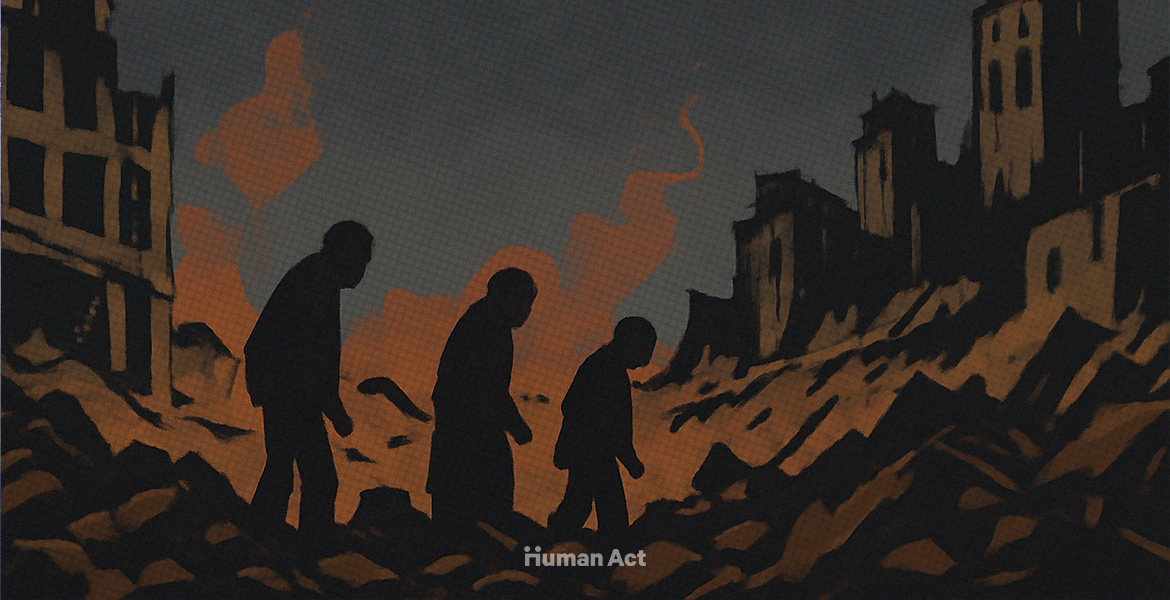


War does not just destroy cities and claim lives; it deepens poverty and fuels inequality for generations.
Behind every battlefield lie shattered economies, displaced families, and a widening gap between the powerful and the powerless. While bombs fall and borders shift, the most vulnerable are left to bear the heaviest burden.
In this article, we explore how war disrupts livelihoods, concentrates wealth, and locks entire populations in cycles of deprivation that long outlast the sound of gunfire.
War shatters economies, destroys wealth, forces people from their homes, and halts learning. The poorest suffer the most, while better-off groups often find ways to recover or adapt.
Keep reading to learn more about the effects of war on inequality.
In 39 conflict-affected countries, extreme poverty has surged, pushing over 1 billion people into hunger, according to a recent World Bank analysis. Since 2020, per-capita income in these regions has fallen by 1.8% annually, while other developing nations have experienced growth of about 2.9%. These income drops hit the poorest hardest, thrusting more families into dire straits and widening existing wealth gaps.
War shatters economies. It halts trade, scares off investment, and forces businesses to close, causing widespread unemployment. In Ukraine, for example, UN-backed research shows that forced migration during the invasion increased unemployment by 7.5 percentage points.
Data from the International Organization for Migration (IOM) reinforces this: recently displaced Ukrainians face 24% unemployment, compared to 13% for those displaced longer ago. The impact falls the hardest on the marginalized, facing compounding barriers to entry. Prolonged joblessness does not just cut pay, it erodes careers and curtails social mobility, locking families into cycles of poverty and inequality.
Bombing does not just claim lives; it destroys the very foundations of recovery. Schools, hospitals, factories, and homes are often targeted, wiping out critical infrastructure and erasing opportunities for education, health, and economic revival. Without functioning schools, clinics, or industry, the poorest communities are left without tools to rebuild, deepening divisions and entrenching inequality.
War deepens inequality by destroying infrastructure, wrecking economies, and trapping people in poverty. In 39 conflict-affected countries, over 1 billion people are now hungry, with GDP per person falling by 1.8% annually, while other developing nations grew by nearly 2.9%.
Violence erodes schools, hospitals, and businesses, wiping out both physical and human capital, and hitting the poorest hardest. As a result, wars entrench disadvantages and widen the gap between the rich and the poor.
The brief but intense conflict between Iran and Israel inflicted heavy costs, and the burden did not fall evenly. In Israel, the estimated $6 billion economic hit, with growth forecasts slashed by over a percentage point and a spike in military spending, strains public services and heightens living costs for ordinary citizens. While stock markets surged and faith returned to high-tech, inflation and disrupted labor from military drafts risk squeezing lower-income households, deepening economic divides.
In Iran, the war compounds an already collapsing economy with 40‑50% inflation, a crumbling currency, and widespread shortages. The bombing of energy infrastructure crippled oil exports, from 11.7 million barrels to almost none, decimating government revenue and pushing more families below the poverty line.
Rural food insecurity surged, affecting perhaps 2.3 million people as agricultural chains were disrupted. With food prices up 30–50% and transport bottlenecks rampant, poorer Iranians face severe hardship, while better-off individuals may shield assets or push savings abroad.
Recovery time from conflict can take upwards of 14 years and often longer. It is possible, but complex, varied, and never a quick fix. Research shows that after most wars, GDP per person drops about 9%, with some conflicts wiping out 40–70% of national income. Roughly one-third of countries bounce back in under a decade, but others take much longer, or never fully recover.
Nations with stronger economies and democracies pre-war tend to rebuild faster. Let’s not forget the fact that short, singular conflicts heal quicker, while repeated wars stall recovery.
This is a list of practical suggestions that can be done as postwar recovery actions:
Recovery is possible, but it hinges on peace, governance, smart aid, and structural rebuilding. There is no “magic bullet”. It is only a sustained effort tailored to each nation’s unique context.
To reduce poverty and inequality after conflict, we need to meet urgent needs and build for the long term. This means creating jobs, supporting the most vulnerable, and helping communities heal. Lasting peace comes from shared opportunities, strong local economies, and a sense of belonging for everyone.
Modern Diplomacy / The Guardian / Nypost / Radiance Weekly / The National News / IDS / CEPR
"*" indicates required fields